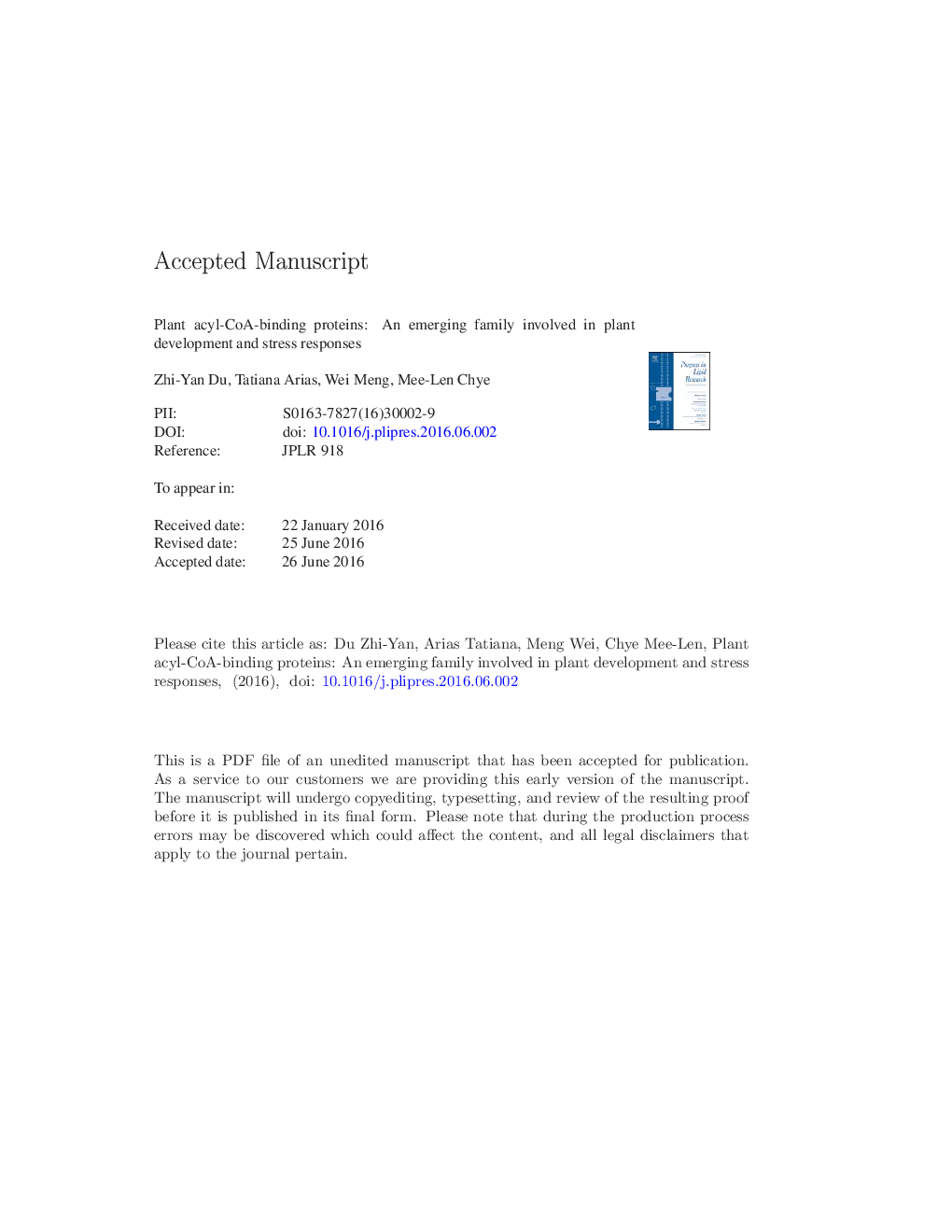| Article ID | Journal | Published Year | Pages | File Type |
|---|---|---|---|---|
| 8358912 | Progress in Lipid Research | 2016 | 74 Pages |
Abstract
Acyl-CoA-binding protein (ACBP) was first identified in mammals as a neuropeptide, and was demonstrated to belong to an important house-keeping protein family that extends across eukaryotes and some prokaryotes. In plants, the Arabidopsis ACBP family consists of six AtACBPs (AtACBP1 to AtACBP6), and has been investigated using gene knock-out mutants and overexpression lines. Herein, recent findings on the AtACBPs are examined to provide an insight on their functions in various plant developmental processes, such as embryo and seed development, seed dormancy and germination, seedling development and cuticle formation, as well as their roles under various environmental stresses. The significance of the AtACBPs in acyl-CoA/lipid metabolism, with focus on their interaction with long to very-long-chain (VLC) acyl-CoA esters and their potential role in the formation of lipid droplets in seeds and vegetative tissues are discussed. In addition, recent findings on the rice ACBP family are presented. The similarities and differences between ACBPs from Arabidopsis and rice, that represent eudicot and monocot model plants, respectively, are analyzed and the evolution of plant ACBPs by phylogenetic analysis reviewed. Finally, we propose potential uses of plant ACBPs in phytoremediation and in agriculture related to the improvement of environmental stress tolerance and seed oil production.
Related Topics
Life Sciences
Agricultural and Biological Sciences
Food Science
Authors
Zhi-Yan Du, Tatiana Arias, Wei Meng, Mee-Len Chye,
